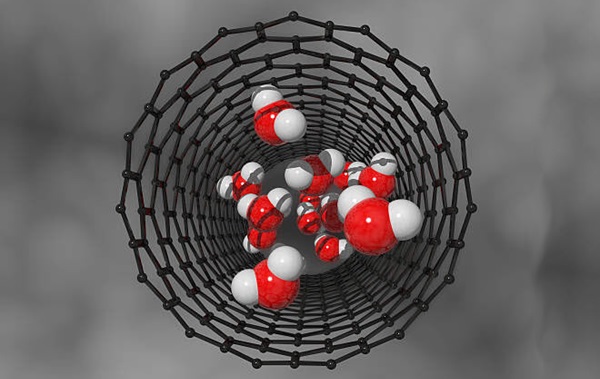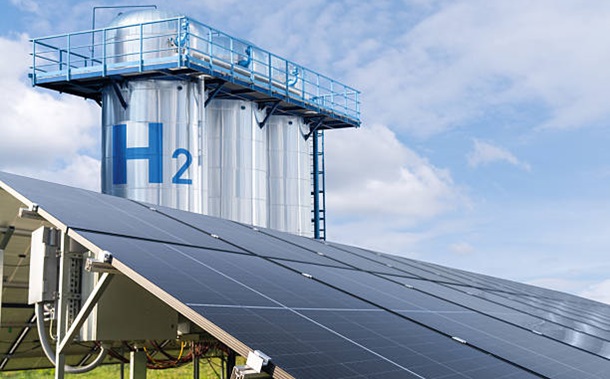CFD Analysis of Heat Exchanger Effectiveness and LMTD with Varying Pipe Length
Downloads
This paper presents a new numerical analysis for 2D heat exchanger (HE) model by employing computational fluid dynamics (CFD) simulations to analyze the impact of pipe length on the efficiency and the Log Mean Temperature Difference (LMTD) of parallel and counterflow double-pipe heat exchangers while maintaining constant flow rates, inlet temperatures, and fluid properties. The findings demonstrate that heat exchanger efficiency and LMTD in both the parallel and counter-flow HEs are significantly influenced by pipe length, with longer heat exchangers improving heat transfer effectiveness by allowing more time for thermal exchange, larger heat exchange surface area, and achieving a more uniform temperature distribution. Counterflow heat exchangers also showed higher efficiencies at all lengths than parallel flow heat exchangers due to the larger temperature difference between the fluids. These insights are particularly valuable for engineers and designers seeking to optimize heat exchanger configurations for industrial applications, where enhancing heat transfer efficiency and minimizing energy losses are critical for cost-effective and sustainable thermal management systems.
Downloads
[1] Omer, A. M. (2008). Energy, environment and sustainable development. Renewable and Sustainable Energy Reviews, 12(9), 2265–2300. doi:10.1016/j.rser.2007.05.001.
[2] Armaroli, N., & Balzani, V. (2007). The future of energy supply: Challenges and opportunities. Angewandte Chemie - International Edition, 46(1–2), 52–66. doi:10.1002/anie.200602373.
[3] Popp, D., Newell, R. G., & Jaffe, A. B. (2010). Energy, the Environment, and Technological Change. Handbook of the Economics of Innovation, Volume 2, 873–937, Elsevier, Amsterdam, Netherlands. doi:10.1016/s0169-7218(10)02005-8.
[4] Asif, M., & Muneer, T. (2007). Energy supply, its demand and security issues for developed and emerging economies. Renewable and Sustainable Energy Reviews, 11(7), 1388–1413. doi:10.1016/j.rser.2005.12.004.
[5] Hadjipaschalis, I., Poullikkas, A., & Efthimiou, V. (2009). Overview of current and future energy storage technologies for electric power applications. Renewable and Sustainable Energy Reviews, 13(6–7), 1513–1522. doi:10.1016/j.rser.2008.09.028.
[6] Zohuri, B. (2016). Application of Compact Heat Exchangers for Combined Cycle Driven Efficiency in Next Generation Nuclear Power Plants. Springer International Publishing, Cham, Switzerland. doi:10.1007/978-3-319-23537-0.
[7] Hajatzadeh Pordanjani, A., Aghakhani, S., Afrand, M., Mahmoudi, B., Mahian, O., & Wongwises, S. (2019). An updated review on application of nanofluids in heat exchangers for saving energy. Energy Conversion and Management, 198, 111886. doi:10.1016/j.enconman.2019.111886.
[8] Shabgard, H., Allen, M. J., Sharifi, N., Benn, S. P., Faghri, A., & Bergman, T. L. (2015). Heat pipe heat exchangers and heat sinks: Opportunities, challenges, applications, analysis, and state of the art. International Journal of Heat and Mass Transfer, 89, 138–158. doi:10.1016/j.ijheatmasstransfer.2015.05.020.
[9] Hesselgreaves, J. E., Law, R., & Reay, D. (2016). Compact heat exchangers: selection, design and operation. Butterworth-Heinemann, Oxford, United Kingdom. doi:10.1016/B978-0-08-100305-3.00008-2.
[10] McDonald, C. F. (1989). The increasing role of heat exchangers in gas turbine plants. Vol. 79160, V004T09A005, American Society of Mechanical Engineers, New York, United States. doi:10.1115/89-GT-103.
[11] Mills, A. F. (1992). Heat transfer. CRC Press, Routledge, New York, United States. doi:10.4324/9780203752173.
[12] Kaviany, M. (2012). Principles of heat transfer in porous media. Springer Science & Business Media, New York, United States. doi:10.1007/978-1-4612-4254-3.
[13] Sekulić, D. P., & Sha, R. K. (2023). Fundamentals of heat exchanger design. John Wiley & Sons, Hoboken, United States. doi:10.1002/9781119883296.
[14] Shah, R. K., & Sekulic, D. P. (1998). Heat exchangers John Wiley & Sons, Hoboken, United States.
[15] Fraas, A. P. (1991). Heat exchanger design. John Wiley & Sons, Hoboken, United States.
[16] Vekariyamukesh, V., Selokar, G. R., & Paul, A. (2012). Optimization and Design of Heat Exchanger with Different Materials. International Journal of Mathematical Engineering and Management Sciences, 5(1), 37–42.
[17] Marzouk, S. A., Abou Al-Sood, M. M., El-Said, E. M. S., Younes, M. M., & El-Fakharany, M. K. (2023). A comprehensive review of methods of heat transfer enhancement in shell and tube heat exchangers. Journal of Thermal Analysis and Calorimetry, 148(15), 7539–7578. doi:10.1007/s10973-023-12265-3.
[18] Amor, N., Adach, K., Noman, M. T., Hazuka, F., & Fijalkowski, M. (2024). Advances in heat exchangers for heat and mass transfer: a review. Journal of the Textile Institute, 115(12), 2678–2692. doi:10.1080/00405000.2024.2311226.
[19] Agarwal, P., Adhirathsik, & Shanthi, V. (2014). Application of heat exchangers in bioprocess industry: A review. International Journal of Pharmacy and Pharmaceutical Sciences, 6(1), 24–28.
[20] Adam, A. Y., Oumer, A. N., Najafi, G., Ishak, M., Firdaus, M., & Aklilu, T. B. (2019). State of the art on flow and heat transfer performance of compact fin-and-tube heat exchangers. Journal of Thermal Analysis and Calorimetry, 139(4), 2739–2768. doi:10.1007/s10973-019-08971-6.
[21] Kays, W.M. and London, A.L. (1984) Compact Heat Exchangers (3rd Ed.). McGraw-Hill Book Company, Columbus, United States.
[22] Gude, V. G. (2015). Energy storage for desalination processes powered by renewable energy and waste heat sources. Applied Energy, 137, 877–898. doi:10.1016/j.apenergy.2014.06.061.
[23] Lee, H. (2022). Thermal Design: Heat Sinks, Thermoelectrics, Heat Pipes, Compact Heat Exchangers, and Solar Cells (2nd Ed.). John Wiley & Sons, Hoboken, United States. doi:10.1002/9781119686040.
[24] Karwa, R. (2020). Heat Exchangers. In: Heat and Mass Transfer. Springer, Singapore. doi:10.1007/978-981-15-3988-6_14.
[25] Pacio, J. C., & Dorao, C. A. (2011). A review on heat exchanger thermal hydraulic models for cryogenic applications. Cryogenics, 51(7), 366–379. doi:10.1016/j.cryogenics.2011.04.005.
[26] Miguel, A. F., & Rocha, L. A. O. (2018). Tree-Shaped Fluid Flow and Heat Transfer. Springer International Publishing, Cham, Switzerland. doi:10.1007/978-3-319-73260-2.
[27] Chen, K., & Gwilliam, S. B. (1996). An analysis of the heat transfer rate and efficiency of TE (thermoelectric) cooling systems. International Journal of Energy Research, 20(5), 399–417. doi:10.1002/(SICI)1099-114X(199605)20:5<399::AID-ER160>3.0.CO;2-R.
[28] Zhang, H. L., & Davie, C. T. (2013). A numerical investigation of the influence of pore pressures and thermally induced stresses for spalling of concrete exposed to elevated temperatures. Fire Safety Journal, 59, 102–110. doi:10.1016/j.firesaf.2013.03.019.
[29] Mangrulkar, C. K., Dhoble, A. S., Pant, P. K., Kumar, N., Gupta, A., & Chamoli, S. (2020). Thermal performance escalation of cross flow heat exchanger using in-line elliptical tubes. Experimental Heat Transfer, 33(7), 587–612. doi:10.1080/08916152.2019.1704946.
[30] Alrwashdeh, S. S., Ammari, H., Madanat, M. A., & Al-Falahat, A. M. (2022). The Effect of Heat Exchanger Design on Heat transfer Rate and Temperature Distribution. Emerging Science Journal, 6(1), 128–137. doi:10.28991/ESJ-2022-06-01-010.
[31] Sahin, B., Yakut, K., Kotcioglu, I., & Celik, C. (2005). Optimum design parameters of a heat exchanger. Applied Energy, 82(1), 90–106. doi:10.1016/j.apenergy.2004.10.002.
[32] Ghaderi, A., Veysi, F., Aminian, S., Andami, Z., & Najafi, M. (2022). Experimental and Numerical Study of Thermal Efficiency of Helically Coiled Tube Heat Exchanger Using Ethylene Glycol-Distilled Water Based Fe3O4 Nanofluid. International Journal of Thermophysics, 43(8), 118. doi:10.1007/s10765-022-03041-w.
[33] Ajay, K., Kumar, R., Gupta, A., Gokahale, O., & Mukhopadhyay, D. (2023). Understanding the influence of eccentric pressure tube on the thermal behavior of 37-element based PHWR channel under accident condition. Annals of Nuclear Energy, 181, 109533. doi:10.1016/j.anucene.2022.109533.
[34] Khaled, A. R. A., Siddique, M., Abdulhafiz, N. I., & Boukhary, A. Y. (2010). Recent advances in heat transfer enhancements: A review report. International Journal of Chemical Engineering, 1, 106461. doi:10.1155/2010/106461.
[35] Xie, X., Chen, Y., Dai, L., & Xu, L. (2024). Modeling and experimental study of air-cooled finned-tube condenser using coupled distribution parameter method and air-side temperature distribution. Applied Thermal Engineering, 249, 123411. doi:10.1016/j.applthermaleng.2024.123411.
[36] Zhao, L., & Deng, J. (2023). Numerical study on the heat transfer enhancement outside the pipe bundle under the effect of continuous pressure waves. International Journal of Heat and Mass Transfer, 207, 123994. doi:10.1016/j.ijheatmasstransfer.2023.123994.
[37] Bhattacharyya, S., Vishwakarma, D. K., Srinivasan, A., Soni, M. K., Goel, V., Sharifpur, M., Ahmadi, M. H., Issakhov, A., & Meyer, J. (2022). Thermal performance enhancement in heat exchangers using active and passive techniques: a detailed review. Journal of Thermal Analysis and Calorimetry, 147(17), 9229–9281. doi:10.1007/s10973-021-11168-5.
[38] Chang, H. M., & Gwak, K. H. (2015). New application of plate-fin heat exchanger with regenerative cryocoolers. Cryogenics, 70, 1–8. doi:10.1016/j.cryogenics.2015.04.005.
[39] Kirsch, K. L., & Thole, K. A. (2017). Pressure loss and heat transfer performance for additively and conventionally manufactured pin fin arrays. International Journal of Heat and Mass Transfer, 108, 2502–2513. doi:10.1016/j.ijheatmasstransfer.2017.01.095.
[40] Maji, A., Bhanja, D., & Patowari, P. K. (2019). Computational investigation and optimisation study on system performance of heat sink using perforated pin fins mounted at different angles. Progress in Computational Fluid Dynamics, 19(6), 381–400. doi:10.1504/pcfd.2019.10024493.
[41] Effendi, N. S., & Kim, K. J. (2018). Natural convective hybrid fin heat sinks for lightweight and high performance thermal management. Journal of Mechanical Science and Technology, 32(10), 5005–5013. doi:10.1007/s12206-018-0948-4.
[42] Guo, Z. Y., & Li, Z. X. (2003). Size effect on microscale single-phase flow and heat transfer. International Journal of Heat and Mass Transfer, 46(1), 149–159. doi:10.1016/S0017-9310(02)00209-0.
[43] Jiang, P.-X., Fan, M.-H., Si, G.-S., & Ren, Z.-P. (n.d.). Thermal–hydraulic performance of small-scale micro-channel and porous-media heat exchangers. International Journal of Heat and Mass Transfer, 44(5), 1039–1051,
[44] Siddiqui, O. K., & Zubair, S. M. (2017). Efficient energy utilization through proper design of microchannel heat exchanger manifolds: A comprehensive review. Renewable and Sustainable Energy Reviews, 74, 969–1002. doi:10.1016/j.rser.2017.01.074.
[45] Abar, S., Theodoropoulos, G. K., Lemarinier, P., & O’Hare, G. M. P. (2017). Agent Based Modelling and Simulation tools: A review of the state-of-art software. Computer Science Review, 24, 13–33. doi:10.1016/j.cosrev.2017.03.001.
[46] Tu, J., Yeoh, G. H., Liu, C., & Tao, Y. (2024). Computational Fluid Dynamics: A Practical Approach. Butterworth-Heinemann, Oxford, United Kingdom. doi:10.1016/C2021-0-01771-5.
[47] Oyewola, O. M., Awonusi, A. A., & Ismail, O. S. (2024). Performance Optimization of Step-Like Divergence Plenum Air-Cooled Li-Ion Battery Thermal Management System Using Variable-Step-Height Configuration. Emerging Science Journal, 8(3), 795–814. doi:10.28991/ESJ-2024-08-03-01.
[48] Anderson, D., Tannehill, J. C., Pletcher, R. H., Munipalli, R., & Shankar, V. (2020). Computational fluid mechanics and heat transfer. CRC Press, Boca Raton, United States. doi:10.1201/9781351124027.
[49] Wei, Y. (2017). The development and application of CFD technology in mechanical engineering. IOP Conference Series: Materials Science and Engineering, 274(1), 12012. doi:10.1088/1757-899X/274/1/012012.
[50] Zikanov, O. (2019). Essential computational fluid dynamics. John Wiley & Sons, Hoboken, United States.
[51] Ashgriz, N., & Mostaghimi, J. (2002). An introduction to computational fluid dynamics. Fluid Flow Handbook, 1-49.
[52] Kuipers, J. A. M., & van Swaaij, W. P. M. (1997). Application of Computational Fluid Dynamics to Chemical Reaction Engineering. Reviews in Chemical Engineering, 13(3), 1–118. doi:10.1515/revce.1997.13.3.1.
[53] Löhner, R. (2008). Applied Computational Fluid Dynamics Techniques. John Wiley & Sons, Hoboken, United States. doi:10.1002/9780470989746.
[54] Kutler, P. (1985). A perspective of theoretical and applied computational fluid dynamics. AIAA Journal, 23(3), 328–341. doi:10.2514/3.8917.
[55] Karwa, C. A. (2019). Finite element modelling and analysis of the friction stir extrusion process. Master Thesis, The Ohio State University, Columbus, United States.
[56] Saha, C. K., Yi, Q., Janke, D., Hempel, S., Amon, B., & Amon, T. (2020). Opening size effects on airflow pattern and airflow rate of a naturally ventilated dairy building-A CFD study. Applied Sciences (Switzerland), 10(17), 6054. doi:10.3390/app10176054.
[57] Meesala, S. K., Govinda Rao, B., & Yellapragada, D. B. (2023). Effect of pipe rotation on heat transfer to laminar non-Newtonian nanofluid flowing through a pipe: A CFD analysis. Chemical Product and Process Modeling, 18(3), 487–503. doi:10.1515/cppm-2022-0021.
[58] Khayal, O. M. E. S. (2018). Fundamentals of heat exchangers. International Journal of Research in Comp. Applications and Robotics, 6(12), 1-11.
- This work (including HTML and PDF Files) is licensed under a Creative Commons Attribution 4.0 International License.



















